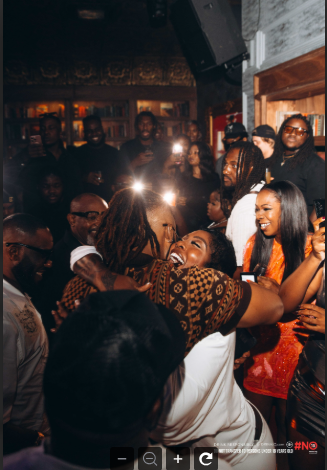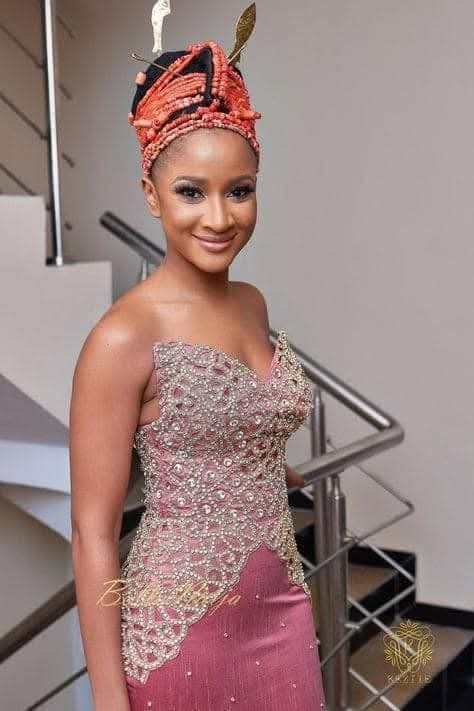HISTORY OF OKUKU AND OTHER ESAN HAIRSTYLE, THEIR SIGNIFICANCE
HISTORY OF OKUKU AND OTHER ESAN HAIRSTYLE, THEIR SIGNIFICANCE
ETO-OKUKU – Okuku is more than a hairstyle, it was an Esan ancient tradition arranged for a deceased wealthy family. it doesn’t belongs to the BINIS, OBA, OJIE, QUEEN or CHIEFS. In modern history, it became a popular hairstyle for young Esan bride.
Okuku hairstyle consisted of one long piece tied together at the top with ‘a parrot’s red feather. It denoted the longevity of a dead man, and his wealth, for the more wives that took part at this ceremony, the wealthier he was taken. Only women whose first babies survived were entitled to plait this hair for another. Incentive for women of a compound to do all they can, to ensure survival of their first born.
The Chief Celebrant or heir to the dead man gave each of the women taking part a white head-tie with which the Eto-Okuku was tied. For the next seven days, they received special and preferential treatments. No sleeping in dirty and un-rubbed house, no eating of soup without meat, no load carrying, no servile work, and in fact for them, it was seven days of dignified life. On the seventh day, the hair was undone by the presentation of a basket of seven yams to each of the women by the heir.
IKPODODO – Girls from the age of five to puberty usually dyed their hair orange after curling with Ikpododo; the curls hung over the forehead to be brushed aside to cover the face. This protected the girl-child from the gaze of admirers until she came of age.
ETUKE (ETO UKE)- Usually after circumcision and on reaching the husband’s home, the girl stopped using Ikpododo and did her hair like full grown women. The commonest style was that of ETUKE which consisted of five pieces in all: three heaps longitudinally and one on each temporal area. Adding height to women, it was the favourite hairstyle of women of rank such as the Onojie’s wives.
OJIETO(The King of hairs)- This was the ceremonial post circumcision hair-do for virtuous girls. It is only seen now in Uzea area. It is a complicated affair of beauty making use of beads and old silver coins. Those who did not have hairs long enough made use of artificial hair from dyed fibres.
ETO OMON – This was the traditional hair-do for mothers from the fourteenth day of delivery to five days before the ceremonial Hair Washing (IHOETO) and Naming Ceremony. It was worn for about three months. It’ consisted of five pieces woven like native tobacco coils. These were covered with EKASA (yellow soap) before the decorative imprints. In modern time only in Uromi Kingdom is the Eto-Omon still of significance.
It is now made a day before Uromi market, soaped the next morning and the woman goes to show-off at the market. Her relatives and friends follow shouting her praise and praising God for her safe delivery; while some give her monetary presents, others demand money from her for joining in praising her.
This Eto-Omon with the Ekasa was the necessity to the Hair Washing on the day of the Naming Ceremony. Sometimes the mother herself did not make the hair – her mother or guardian wore the hair-style on her behalf. Practically every Esan law, custom or prescription has a raison d’etre or an end to serve. Eto Omon is not worn just for its aesthetic beauty but ensures the newly delivered mother has an easy rest which pregnancy and labour demands.
With this stately hair-do, such a newly delivered mother finds it impossible to carry any load on her head – only the very senior wives in the Onojie’s harem adorned constantly with Eto Uke (Etuke) rarely carry small load on their shoulders since they must have maids to bear any burden. Since it is not Esan custom to carry loads on their shoulders like the Gwaris, this woman cannot carry yams or firewood from the farm and perforce has to refrain from such stressful exercise hence a newly delivered was no candidate for strenuous farm work and associated labour until after the hair washing ceremony of the fourth month.
HAIR-DO OF A WIDOW -This was simple, humiliating and sorrowful. She must shave off all the hair of her scalp. Thus it is strictly forbidden for a married woman to shave her scalp otherwise (expressed in Esan proverb – ‘Aba non yulu ze inenen nan rie etoa!’ – it is the death of the father that made the mother shave her hair!).
MEN HAIRSTYLE – As for the men, up to the first quarter of the 19th century the men particularly of noble birth plaited their hair. The Ohens (juju priests) left their hair in long coils (ogbihiagha) while those above the middle age shaved all the scalp except a small island left on the occipital area which was plaited and an ekan bead tied to it.
Source- Esan Native Laws and Customs by Christopher Okojie




